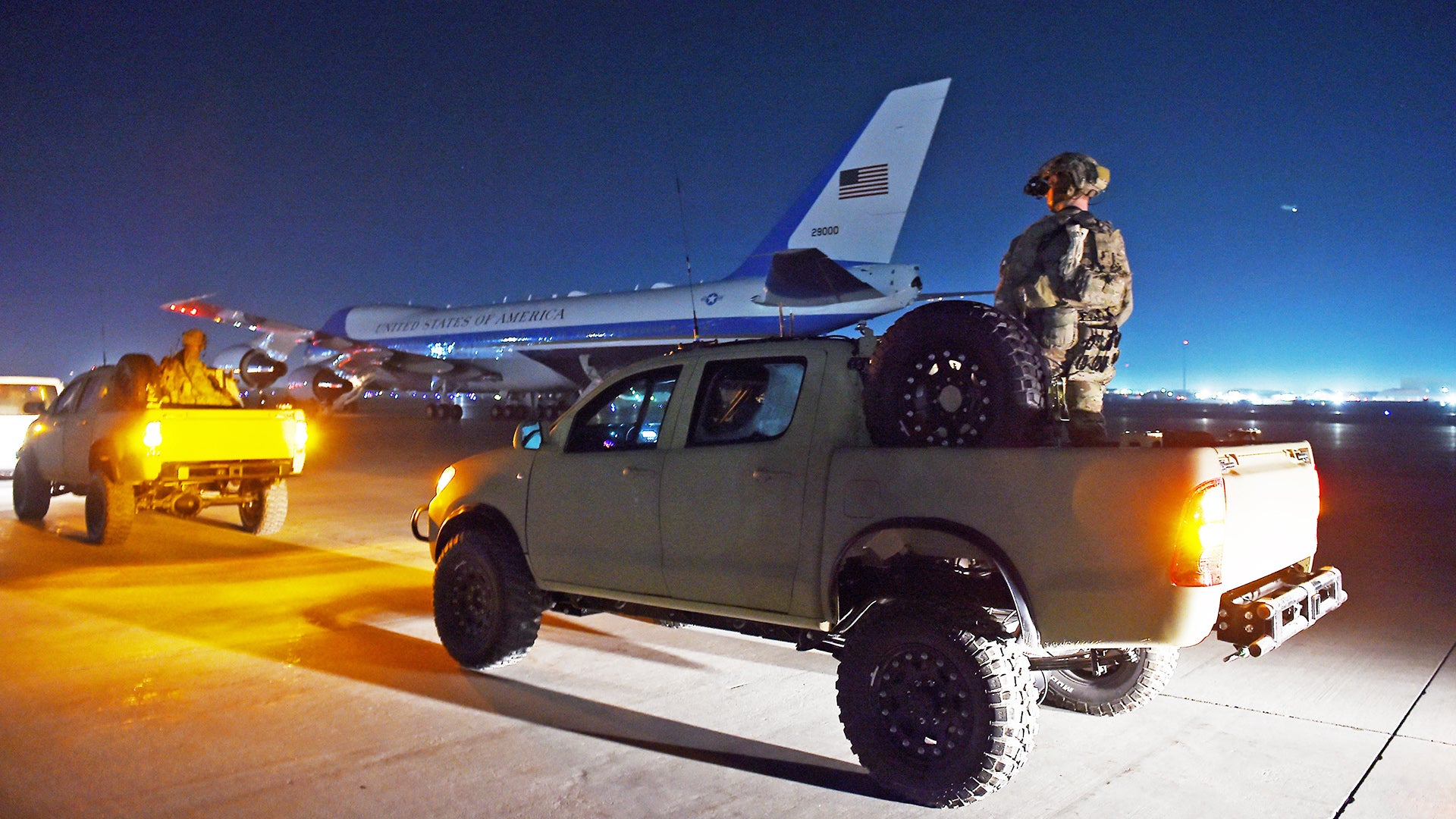President Trump made his first visit to Afghanistan on Thanksgiving. Like the other surprise war zone Presidential visits on major holidays that have come before—most notable was probably President Bush’s trip to Iraq in 2003—this was a clandestine affair. We know a good amount about how the Secret Service, the White House Military Office, and the Air Force executed the mission, but a few questions remain, including what aircraft snuck Trump out of Florida so that he could climb aboard one of two highly modified VC-25As that serve primarily as “Air Force One” at Andrews Air Force Base outside of Washington D.C. and head off to the land of America’s “Forever War?”
Here is an account of how the mission was pulled off from CNN:
Trump golfed as usual on Wednesday, then was whisked away from Mar-a-Lago just after dark in a vehicle specially brought down from Washington earlier in the day, according to two people familiar with the plans. Even some Secret Service agents working at Mar-a-Lago were unaware that Trump had left the compound, according to a law enforcement source.
The President boarded a military plane at an undisclosed airport and took off at 7:20 p.m. en route to Joint Base Andrews, the military base just outside of Washington, with the special car aboard, according to the two people familiar with the plans. The 747 Trump used to travel to Florida earlier in the week remained guarded on the tarmac of Palm Beach International airport throughout the overseas outing.
The military plane had just four blue leather chairs and a portable toilet on board. Only a handful of aides and one member of the traveling press pool joined Trump for that flight. After landing at Joint Base Andrews at about 9:30 p.m., Trump boarded the second Air Force One 747 — which was stowed away inside a hangar, out of sight — where the remainder of the traveling press pool was already on board.
White House officials and reporters alike were stripped of their cell phones and other electronic devices before takeoff. With windows drawn and the plane’s interior lights shut off, Air Force One left at 10:08 p.m. Reporters on board did not find out where they were heading until about two hours before touching down in Afghanistan.
“It’s a dangerous area and he wants to support the troops,” White House press secretary Stephanie Grisham explained aboard Air Force One as she briefed reporters on the President’s destination. “He and Mrs. Trump recognize that there’s a lot of people far away from their families during the holidays and we thought it’d be a nice surprise.”
Trump’s plane landed at Bagram Air Base at 8:33 p.m. local time in pitch darkness. Window curtains were drawn once again and the plane’s lights were shut off to conceal Trump’s arrival.
Reporters were not allowed to report on Trump’s visit until minutes before boarding Air Force One again to return to the US.
Planning for the trip began weeks ahead of time, but only a very tight circle of White House officials were aware. And the White House went to new lengths to avoid arousing suspicion.
On Thursday morning, the @realDonaldTrump account posted an unremarkable tweet wishing Americans a happy Thanksgiving. That tweet and several other retweets late Wednesday and early Thursday had in fact been scheduled ahead of time to avoid arousing suspicions around a President who rarely goes a dozen hours without taking to social media.
At first, the aircraft the President traveled from Florida to Andrews AFB on sounds small and relatively austere, like a C-21A, at least based on its interior description. But this would have put the President out of pocket with the National Command Authority during the flight as those aircraft do not have robust and secure satellite connectivity needed to support such a mission. A C-21 would have raised the least suspicion though, as it’s basically a Learjet 35, which the President never flies on. The shadowy Gulfstream C-20Cs that were meant to be hardened command post backups for Air Force One or even E-4Bs in an emergency have been retired from service. Also, none of these aircraft can swallow up an armored sedan, which was apparently part of the cargo manifest.
The aircraft used was likely a C-17A Globemaster III with a very specific VIP pallet installed known as the Senior Leader In-transit Pallet (SLIP). This would also fit the odd description of the four blue chairs and porta-potty. Connectivity with the National Command Authority would not be a problem either. McGuire AFB specifically handles these types of missions in most instances with their uniquely configured C-17s and an inventory of roll-on, roll-off systems. You can read about the various VIP configurations used by the specialized unit’s C-17s in this past piece of ours.
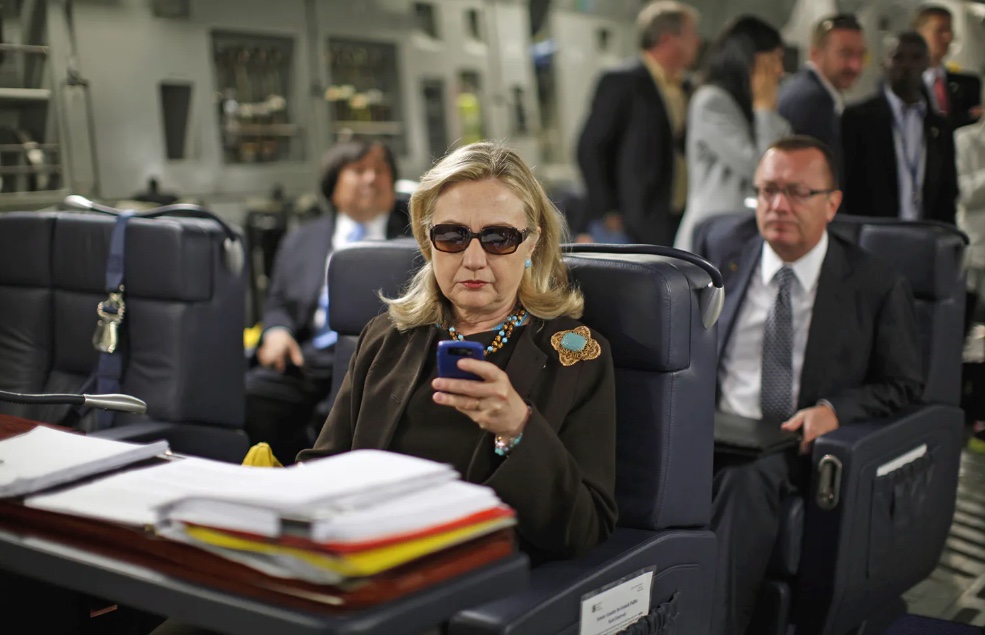
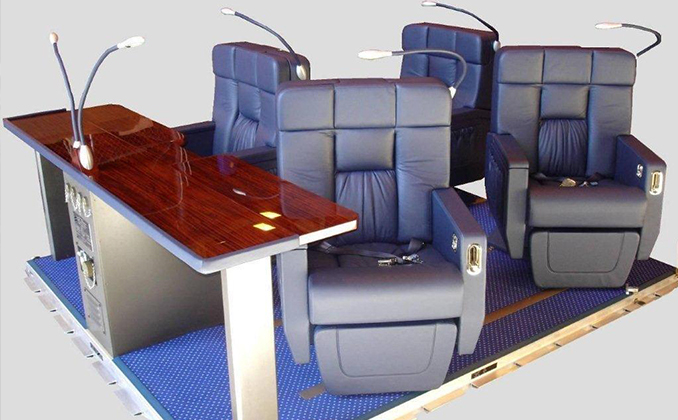
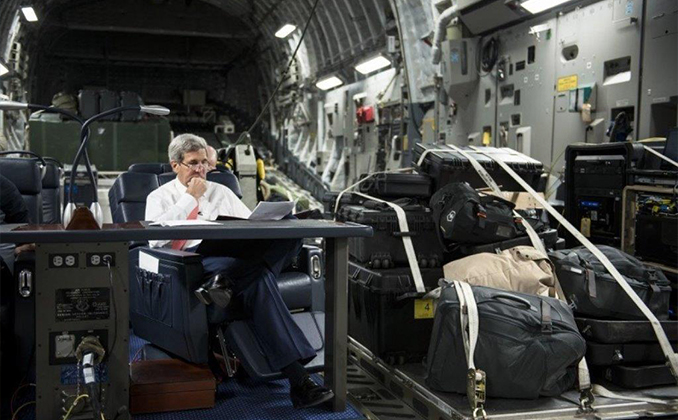
USAF C-17s visit airports all over the United States regularly. As such, one being present not too far from Palm Beach so that it can whisk the President away wouldn’t raise any suspicions. Also, these aircraft are equipped with similar defensive systems as the VC-25A, most notably LAIRCM, and have four engines for redundancy, all things the Secret Service would have liked.
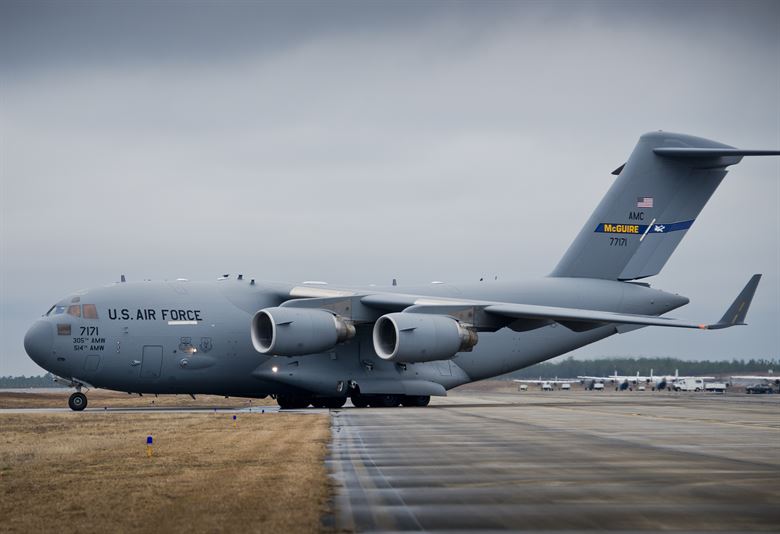
The rest of the account makes perfect sense and we can add that this time the President’s VC-25A chariot masqueraded as a KC-10A Extender tanker, using the hex code of one of those aircraft on its transponder. Our friend and plane tracker extraordinaire @CivMilAir had the KC-10 following the identical route POTUS’s plane would have taken after leaving Andrews AFB on its secretive mission and its return.
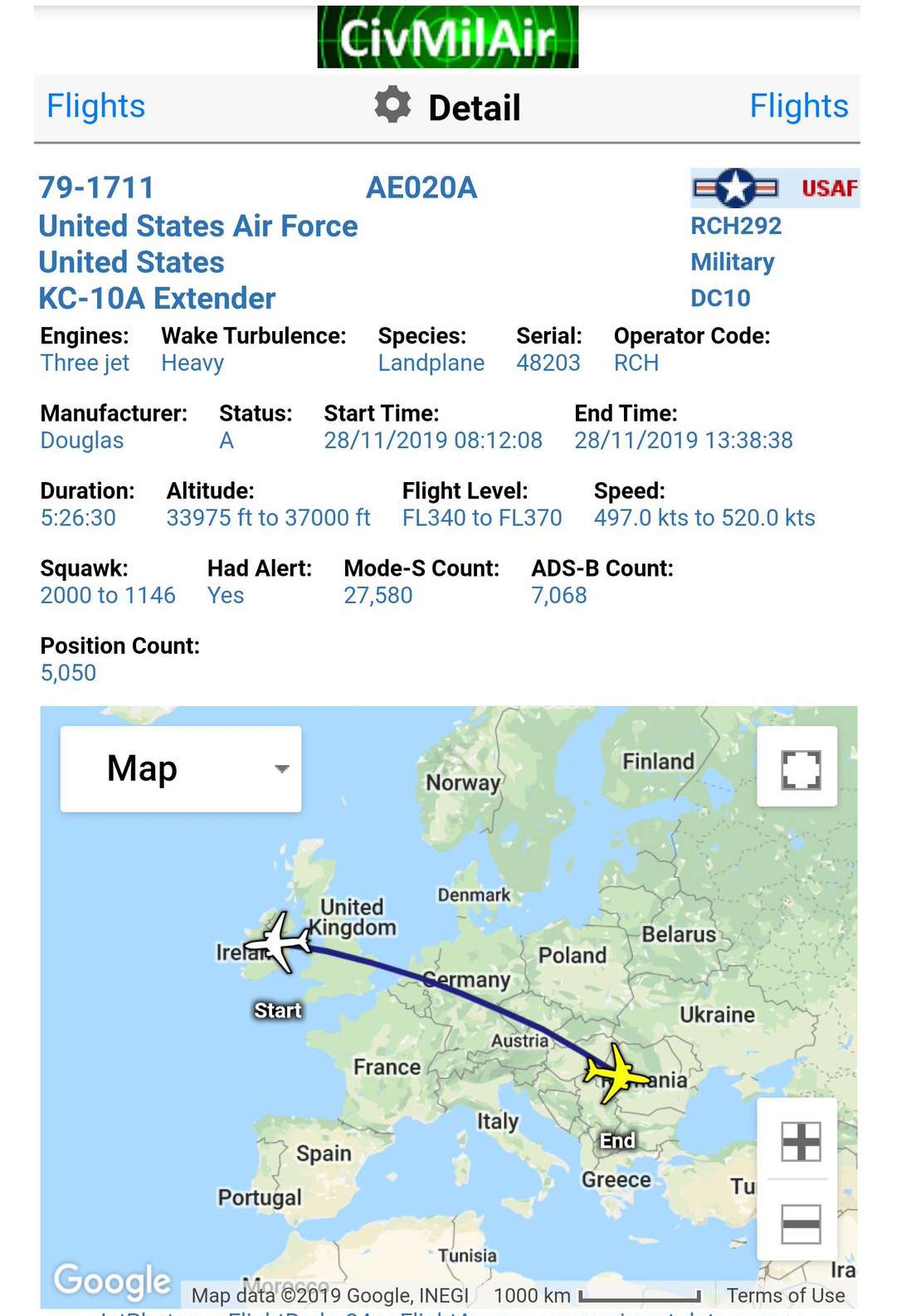
Once Trump left Afghanistan, his VC-25A headed to Ramstein Air Base in Germany. This is a common refueling stop for return trips from the Middle East by VC-25As. But in this case, instead of spending a couple of hours on the ground to refuel, the other VC-25A that had been sitting on the tarmac in Palm Beach flew to the base. So instead of waiting, the President simply switched planes and headed home under the standard Air Force One callsign. Why exactly the switch occurred remains a mystery. Maybe Trump or is staff just wanted to get home as fast as possible. If that was the case, it cost millions of dollars extra to save those two hours.
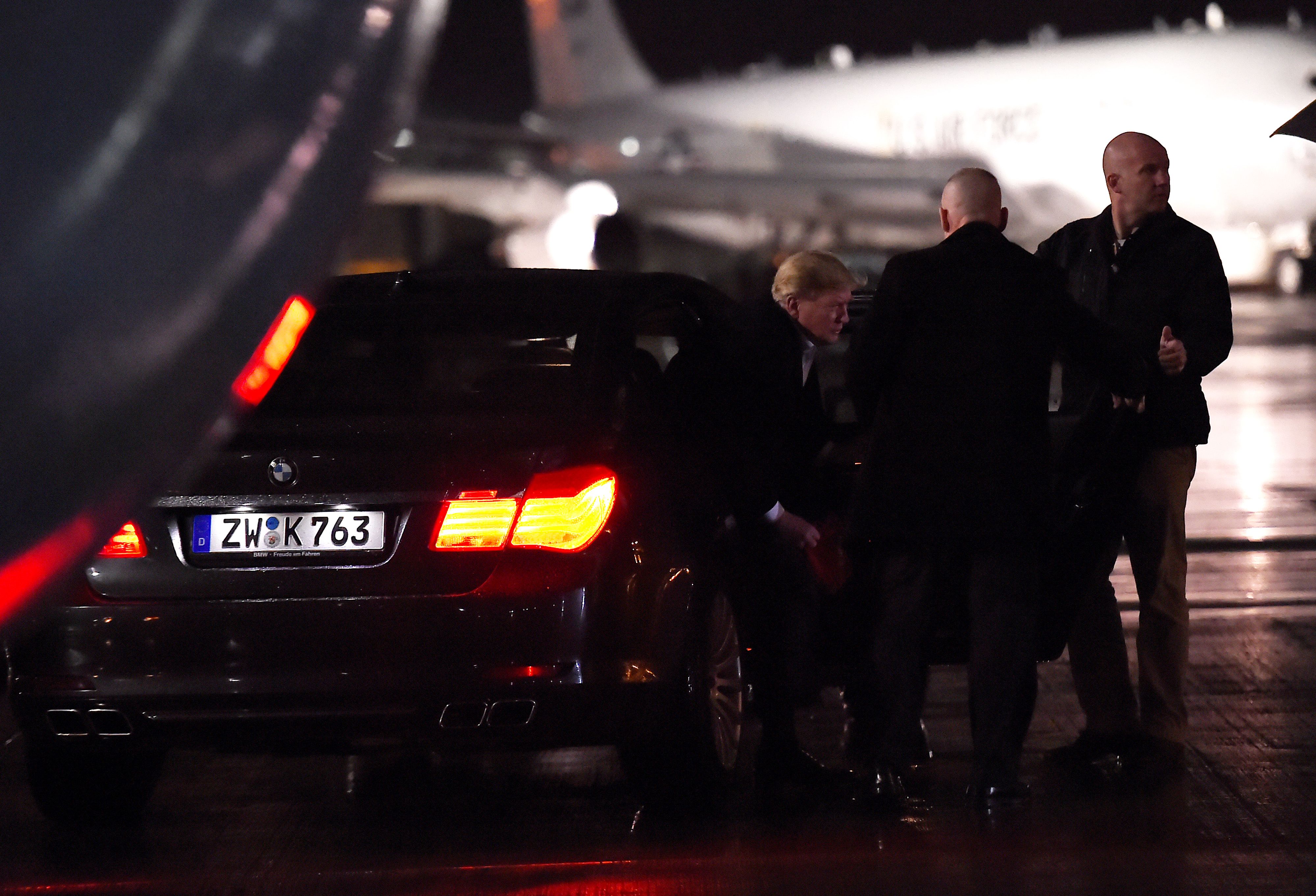
One other part of the story is also worth mentioning—how Air Force One flew direct from Andrews AFB to Bagram Air Base in Afghanistan. The trip has been made multiple times before by VC-25As carting other Presidents in the past. Two routes could have been taken. One is to drop down over the Middle East and then hook north over Pakistan and into Afghanistan. This is an 8,650-mile trip. The other option would have been to push across the Black Sea, over Georgia, the Caspian Sea, Turkmenistan, and then down into Afghanistan. That trip is at best 7,350 miles long. These are minimum figures really, with actual route planning considerations, more distance would be included in either route, especially since the VC-25A would not be operating as Air Force One, which always gets top priority routing and air traffic control facilitation.

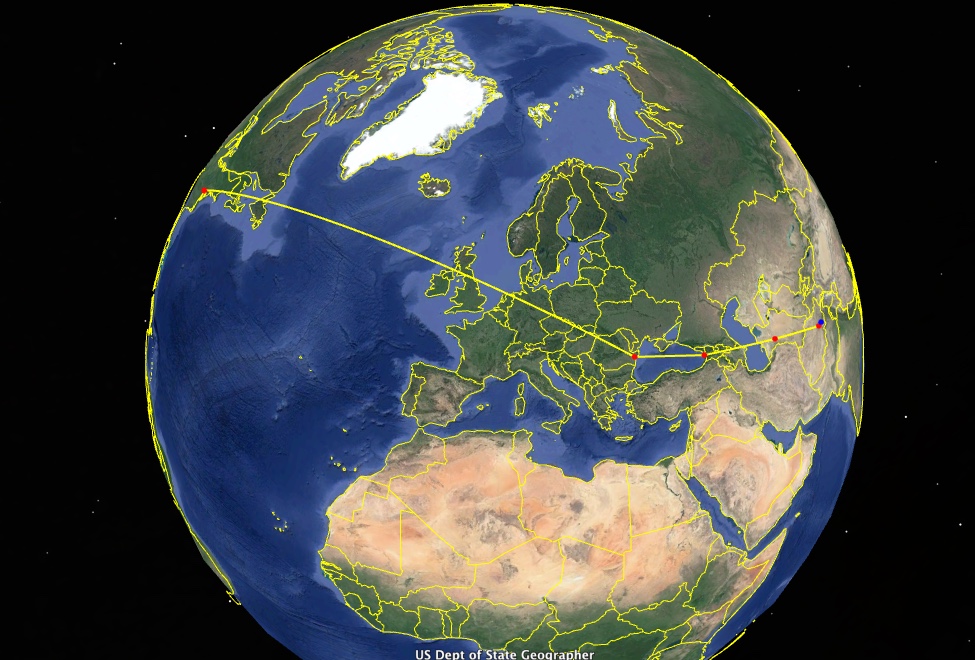
Considering that we know for certain the VC-25A didn’t land on its trip over to Afghanistan, it is interesting that the type could make such a long voyage. Even the shorter route that takes the VC-25 near less than ideal territory where the US has little or no military presence is just within the stated range of the VC-25A. Of course, that range is dependent on wind conditions aloft and other weather along its route, as well as the weight of the aircraft, and so on. We also don’t know precisely the range of the nearly three-decade-old VC-25As in their current configuration, which could differ a bit from their stated range of 7,800 miles.
Even if it was right on the edge, this wouldn’t leave much room for contingencies, which is hardly convenient considering the person the aircraft is transporting and the mission it is on. If it took the Persian Gulf route, which is well established in the past and where there is a huge US military presence and plenty of divert fields for contingency operations, the trip would have been beyond the stated range of the VC-25 by a sizeable margin… That is without aerial refueling.
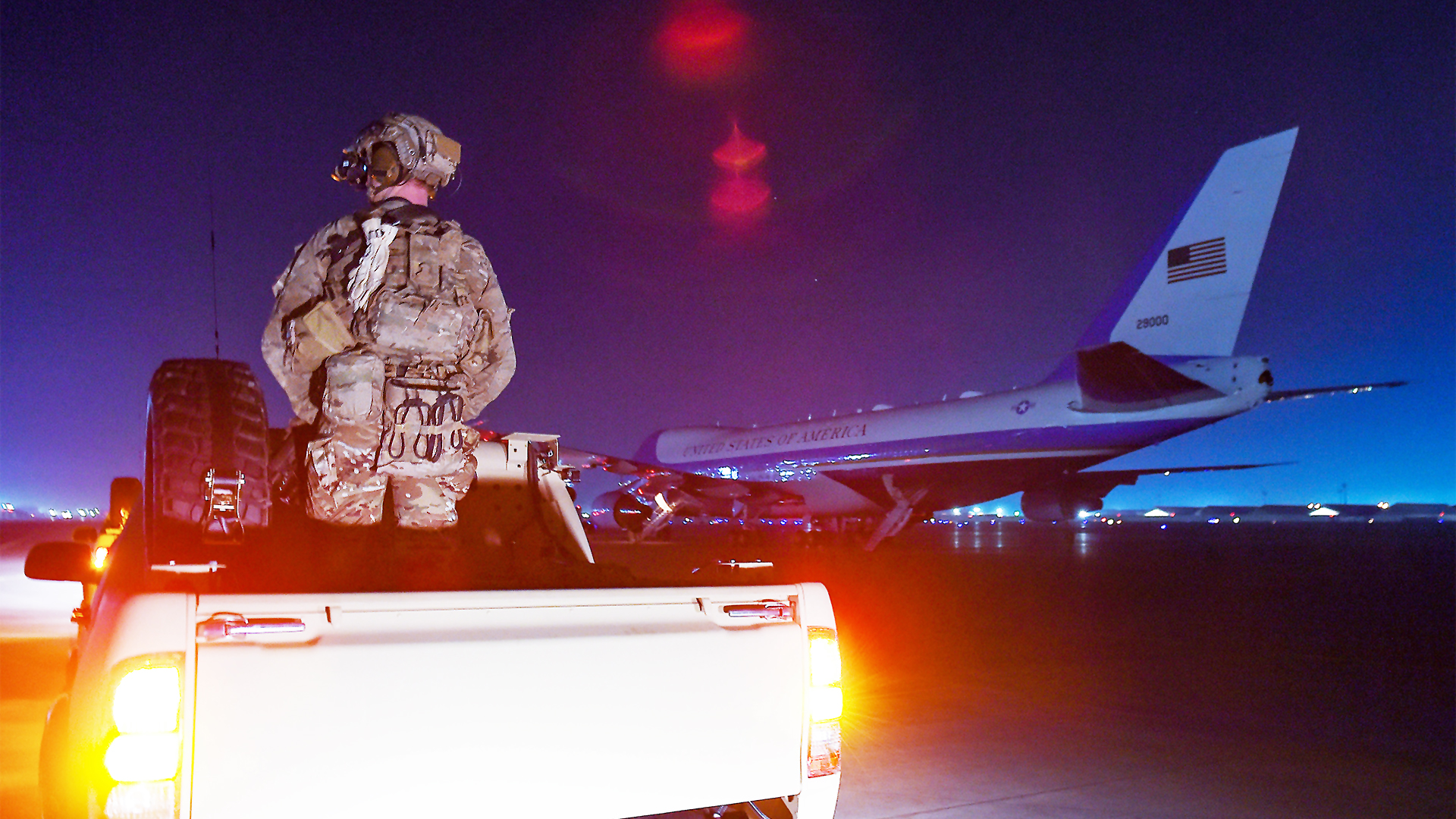
The VC-25A can tank in mid-air, just like its E-4B Nightwatch cousin. You can read all about the modifications to these aircraft that make this possible in this previous piece of ours. The system is not used operationally under normal circumstances, but in a time of great uncertainty and especially following a nuclear exchange, it can be used to keep a VC-25A aloft for as long as a handful of days.
The VC-25A crews practice the refueling mission using the similar 747-200 variant-based E-4Bs, which use the capability often, including when the Secretary of Defense and their press cadre are onboard. In this case, if the northern route was taken, the capability may have not been required, but it is possible that tankers were airborne in the region, just in case. If the southern route was taken, it seems like it would have to of been a necessity.

Recently, when traveling east to Vietnam, Air Force One stopped in Qatar for gas, but only did so after gassing up in the United Kingdom first. This brings into question how a direct flight to Afghanistan is possible?
Even the most direct route from the UK to Vietnam is substantially shorter than the distance from Washington D.C. to Bagram Air Base in Afghanistan. And in the case of the Vietnam trip, a similar route over the Caspian Sea wasn’t taken, one through the Middle East was instead, which is substantially longer.
I have never heard that aerial refueling was part of Air Force One missions to the war-torn country, but it may be a detail the Air Force doesn’t see a reason to delve into deeply. As for future missions, from what we have gleaned, the future Air Force One aircraft, the VC-25B based on the 747-8i, will actually have less range than the VC-25As that currently execute most of the Presidential airlift missions. This is counter-intuitive because the 747-8i is capable of greater range than its 747-200 forebearer, but if the official information is indeed accurate, modifications to the 747-8i airframe will substantially offset its enhanced long-range capabilities, dropping the design requirements from 7,100 miles to 5,800 miles—both of which are already less than the current VC-25A’s stated and demonstrated range. And of course, it is worth noting the aerial refueling capability has been eliminated from the VC-25B requirements entirely.
So, there you have it, another cloak and dagger Presidential airlift operation is in the books. It won’t be long until an entirely new pair of jets take over these historic operations, but a C-17 with some blue first-class seats bolted onto her cargo floor will remain timeless, at least for the foreseeable future.
Contact the author: Tyler@thedrive.com
